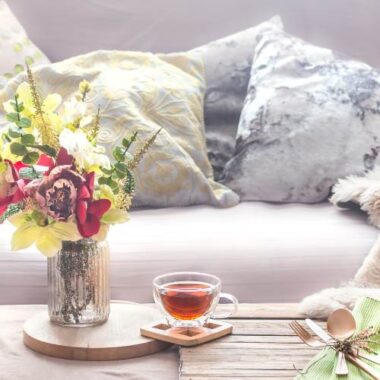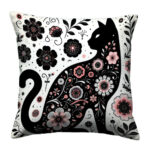How to Mix and Match Pillows Like a Pro: The Ultimate Styling Guide
Mastering the art of pillow mixing is like creating a visual symphony in your living space. It’s not just about throwing together random cushions, but creating a harmonious, intentional design that reflects your personal style and elevates your home’s aesthetic.
The Foundation of Pillow Mixing
Understanding the Basics
Mixing and matching pillows is an art form that requires:
- A keen eye for color
- An understanding of scale and proportion
- Knowledge of texture and pattern
- Confidence in your design choices
Key Design Principles
1. The Color Coordination Rule
- Use a consistent color palette
- Choose 2-3 primary colors
- Include neutral tones as a base
- Create depth through color variations
2. Pattern Play
- Mix different pattern scales
- Combine large, medium, and small prints
- Balance bold patterns with subtle designs
- Use a common color thread to connect patterns
3. Texture Diversity
- Layer different fabric textures
- Combine smooth and rough surfaces
- Mix materials like:
- Velvet
- Linen
- Cotton
- Wool
- Silk
Practical Mixing Strategies
Size and Arrangement Techniques
- Start with larger pillows at the back
- Layer smaller pillows in front
- Use odd numbers (3 or 5 pillows)
- Vary pillow sizes for visual interest
Pattern Mixing Formulas
- Geometric + Organic
- Solid + Textured
- Abstract + Floral
- Striped + Organic Shapes
Professional Designer Secrets
Color Wheel Wisdom
- Use complementary colors
- Explore analogous color schemes
- Create visual tension with unexpected combinations
- Maintain overall color harmony
Proportion and Balance
- 60-30-10 Color Rule
- 60% dominant color
- 30% secondary color
- 10% accent color
- Maintain visual weight
- Create symmetry and asymmetry intentionally
Common Mixing Mistakes to Avoid
- Matching everything too perfectly
- Overcrowding your furniture
- Ignoring scale and proportion
- Forgetting about comfort
- Being too safe with color choices
Style-Specific Mixing Guidelines
Modern Minimalist
- Stick to 2-3 colors
- Use geometric patterns
- Focus on texture over complex designs
- Choose clean lines
Bohemian
- Embrace bold, eclectic combinations
- Mix multiple patterns
- Use rich, saturated colors
- Layer different textures
Traditional
- Use more subdued color palettes
- Select classic, elegant patterns
- Maintain symmetry
- Focus on quality fabrics
Budget-Friendly Mixing Tips
- Buy pillow covers instead of full pillows
- Mix high-end statement pieces with affordable basics
- Learn basic sewing for custom covers
- Shop sales and discount stores
- DIY some of your pillow designs
Technical Mixing Formula
Pillow Mix = [Dominant Color] + [Accent Colors] + [Pattern Variety] + [Texture Layers]
Emotional Considerations
Remember that your pillow arrangement should:
- Reflect your personality
- Create a comfortable atmosphere
- Bring joy to your living space
- Tell a story about you
Maintenance and Care
- Rotate pillows regularly
- Clean according to fabric instructions
- Store seasonal pillows properly
- Refresh your collection periodically
Conclusion
Mixing and matching pillows is an art that combines technical design principles with personal creativity. Don’t be afraid to experiment, trust your instincts, and most importantly, create a space that makes you feel at home.
Your throw pillows are more than decorative items – they’re an expression of your unique style and personality.









